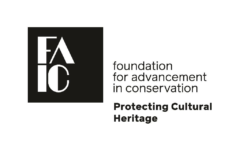
While hazardous materials can be a daunting topic to tackle, it is very possible to not only identify hazards in your own collection, but to also implement straightforward and inexpensive solutions to safely house, store, display and work with these materials. This webinar will take a close look at hazardous materials present in museum collections and how to properly manage their safe storage and handling. It will cover not only the identification of hazards, but also the straightforward steps that can be taken to improve safety and reduce the likelihood of exposure to dangerous substances. Points to be discussed include:
- What makes a material hazardous? Going beyond labels that just say “poison” or “danger” to examine the different types and levels of toxicity, routes of exposure, exposure limits, as well as dangerous physical properties like flammability and radioactivity. Also taking a look at the wide range of common hazards (and some less common ones) that you are likely to encounter.
- How to survey your collection for hazards – what should you be looking for and how? While some hazardous materials are easy to identify visually, many are not and require further analytical testing (often p-XRF or GC-MS). We will take a look at what is required to identify materials like organic and inorganic pesticides, heavy metals and ethnobotanical toxins as well as strategies for finding and arranging for analytical testing.
- What to do with hazardous materials once they’re identified. The vast majority of materials can be safely handled and interacted with as long as some thought has been put into safe and clear working procedures – this includes having proper PPE on hand and available to staff, having a system of tagging hazardous objects both physically and in digital records, as well as taking the time to make simple adjustments to housing and storage
Presenters
 Hayley Monroe is an objects conservator currently based in Vancouver, British Columbia. She graduated with a Master’s in conservation from the UCLA/Getty Interdepartmental Program in the Conservation of Archaeological and Ethnographic Materials at the University of California, Los Angeles in 2018. Since then she has worked for the Museum of Vancouver, the BC Arts Council, and the Vancouver Maritime Museum. At the Museum of Vancouver she oversaw the identification and management of hazardous materials in collections, a subject that she continues to work on as it frequently overlaps with and influences not only conservation treatments but also exhibition design, storage and housing practices, and how collections are approached and accessed by visitors and staff alike.
Hayley Monroe is an objects conservator currently based in Vancouver, British Columbia. She graduated with a Master’s in conservation from the UCLA/Getty Interdepartmental Program in the Conservation of Archaeological and Ethnographic Materials at the University of California, Los Angeles in 2018. Since then she has worked for the Museum of Vancouver, the BC Arts Council, and the Vancouver Maritime Museum. At the Museum of Vancouver she oversaw the identification and management of hazardous materials in collections, a subject that she continues to work on as it frequently overlaps with and influences not only conservation treatments but also exhibition design, storage and housing practices, and how collections are approached and accessed by visitors and staff alike.
Handouts
- C2C Care Hazards Webinar Presentation June 2021
- C2C Care Hazards Webinar Presentation with notes June 2021




